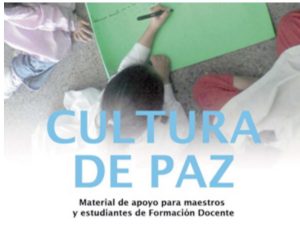. EDUCATION FOR PEACE .
An article from ANEP, Dirección General de Educación Inicial y Primaria (translation by CPNN)
Next Friday, August 9, in the Amphitheater of the Ministry of Foreign Affairs, starting at 6:00 p.m., the book Culture of Peace will be presented, a work of support for teachers, educators, students and citizens who promote Human Rights.

The present edition of this book is a modest contribution from the Movement of Educators for Peace for the daily work of teachers, educators and student teachers.
Culture of peace curricula: what are some good examples?
Promoting a culture of peace requires a set of knowledge and supportive attitudes and behaviors depends upon this basis. It is a collective construction that develops in the dynamic relationship between theory and practice in which the student and the educator are conceived as subjects of learning and teaching integrated within an educational community.
The different forms of violence that permeate our society are also expressed in institutions, but we have the opportunity to select and reproduce those that contribute to a culture of peace.
The educational institution that is based on the principles of a culture of peace constitutes the best environment for balanced and respectful personal relationships.
Learning and teaching in these conditions become a rewarding and productive effort that allows the integral development of the student and the educator. Therefore, educating in a culture of peace is not an additional effort that is demanded of educators but rather an aid to facilitate and make their pedagogical work more consistent.
– – – – – –
If you wish to make a comment on this article, you may write to coordinator@cpnn-world.org with the title “Comment on (name of article)” and we will put your comment on line. Because of the flood of spam, we have discontinued the direct application of comments.